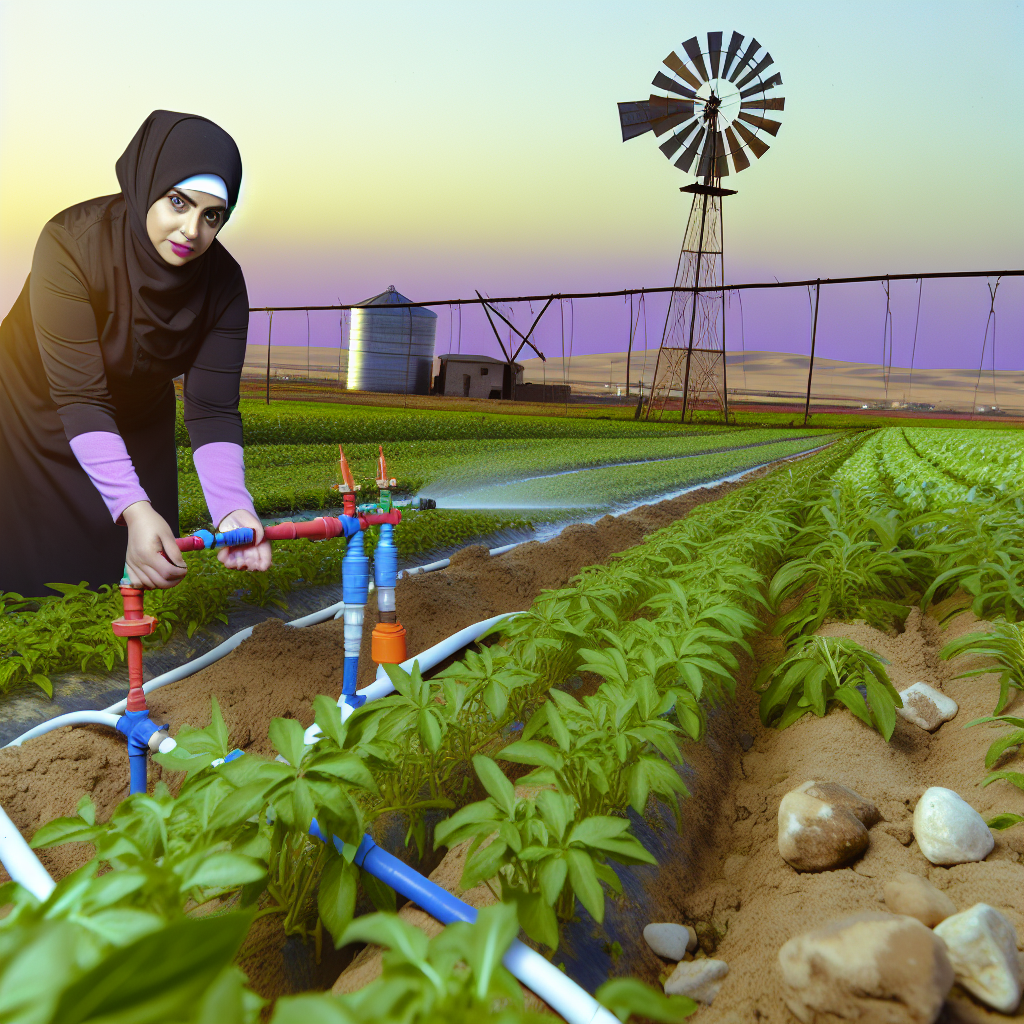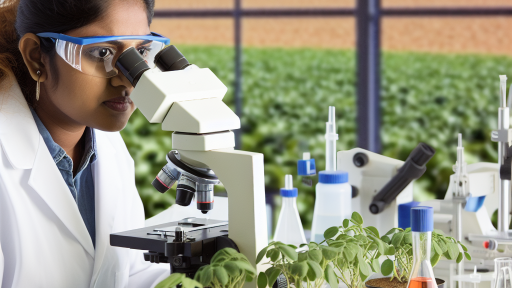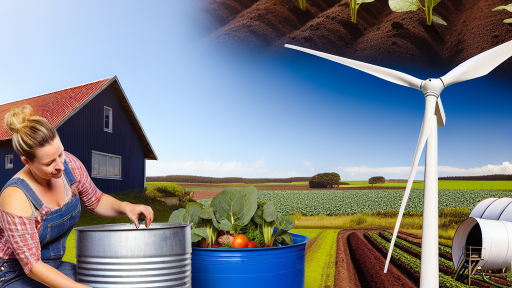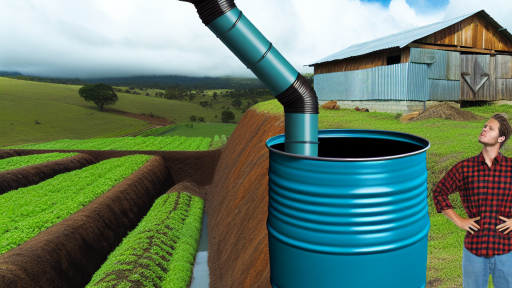Understanding the Importance of Water Conservation in Farming
Water as a Vital Resource
Water is essential for farming operations.
It supports crop growth and livestock health.
Without adequate water, agricultural productivity declines significantly.
Challenges of Water Scarcity
Climate change exacerbates water scarcity issues.
Farmers face unpredictable rainfall and prolonged droughts.
Consequently, managing water resources becomes crucial.
Economic Benefits of Water Conservation
Effective water management leads to cost savings.
Farmers can reduce their expenses on irrigation.
Additionally, it enhances crop yields and quality.
Environmental Impact of Water Conservation
Conserving water benefits local ecosystems.
It helps maintain soil health and biodiversity.
Moreover, it reduces the risks of soil erosion and salinization.
Community Resilience and Water Conservation
Water conservation strengthens community resilience.
It allows farmers to share resources and knowledge.
Moreover, it fosters a collective approach to sustainability.
Transform Your Agribusiness
Unlock your farm's potential with expert advice tailored to your needs. Get actionable steps that drive real results.
Get StartedAssessing Current Water Use Practices on the Farm
Understanding Your Water Usage
Start by reviewing all existing water use practices on your farm.
Record the types of crops you grow and their water needs.
Next, analyze how much water you currently use for irrigation.
Consider factors such as water source and quality.
Identifying your water consumption will provide a foundation for improvement.
Identifying Areas for Improvement
Evaluate your irrigation techniques and their effectiveness.
For instance, assess whether you use drip irrigation or sprinklers.
Note any areas where water might be wasted during application.
This includes runoff, evaporation, and overwatering.
By pinpointing inefficiencies, you can target specific practices for modification.
Engaging in Data Collection
Collect data on weather patterns that affect your water needs.
This will help you understand rainfalls and drought periods.
Install sensors to monitor soil moisture levels regularly.
Understand how moisture levels correlate with crop health and yield.
Data-driven decisions will enhance your water conservation efforts.
Consulting Experts and Resources
Consider consulting with agronomists specializing in water use.
They can provide insights tailored to your farming practices.
Utilize resources from agricultural extension services for guidance.
Online forums and community workshops often share best practices.
Leverage these resources to stay informed about innovative techniques.
Implementing Efficient Irrigation Techniques
Drip Irrigation
Drip irrigation delivers water directly to the roots of plants.
This method reduces water wastage significantly.
Farmers can achieve higher crop yields with less water.
Additionally, this technique minimizes weed growth.
Showcase Your Farming Business
Publish your professional farming services profile on our blog for a one-time fee of $200 and reach a dedicated audience of farmers and agribusiness owners.
Publish Your ProfileUsing drip irrigation can improve soil moisture levels.
Installation requires careful planning and design.
Consider consulting with a local irrigation expert.
Regular maintenance ensures long-term efficiency.
Farmers should monitor water output to detect issues.
Sprinkler Systems
Sprinkler systems distribute water evenly across large areas.
They are ideal for various crops and field sizes.
Farmers can automate sprinkler systems for convenience.
This reduces labor costs and minimizes human error.
Moreover, adjustable nozzles provide flexibility in coverage.
Timing devices allow for optimal watering schedules.
Farmers should select systems based on their specific needs.
Conducting regular checks can prevent malfunctions.
Overall, sprinkler systems can boost water efficiency.
Combining Techniques
Farmers may combine drip irrigation and sprinklers.
This approach optimizes water use for different crops.
For instance, rows of vegetables might use drip irrigation.
Meanwhile, broad areas of grass can utilize sprinklers.
Such integration maximizes water savings and crop health.
Farmers should evaluate their fields to create a plan.
Research shows this combination can improve overall yields.
It’s essential to monitor both systems regularly.
This ensures they operate efficiently together.
Gain More Insights: Soil Management Practices to Decrease Emissions
Using Rainwater Harvesting Systems to Supplement Water Supply
Importance of Rainwater Harvesting
Rainwater harvesting significantly reduces dependency on traditional water sources.
This method captures and utilizes natural rainfall efficiently.
Furthermore, it plays a crucial role in sustainable farming practices.
Components of Rainwater Harvesting Systems
A typical rainwater harvesting system comprises several key components.
First, a catchment area collects rainwater from roofs or other surfaces.
Next, gutters direct the rainwater into storage tanks.
Additionally, filtration systems ensure the water remains clean and safe for use.
Benefits of Implementing Rainwater Harvesting
Implementing rainwater harvesting offers multiple advantages for farmers.
- It reduces water costs significantly.
- Farmers can store water for dry spells or unpredicted shortages.
- This method encourages efficient water management techniques.
Steps to Establish a Rainwater Harvesting System
Establishing a rainwater harvesting system involves several steps.
Begin by assessing your farm’s water needs and rainfall patterns.
Next, choose an appropriate design depending on your location.
Many systems include cisterns or barrels for storage.
Finally, regularly maintain the system to ensure optimal efficiency.
Adjusting to Climate Variability
Farmers can adapt rainwater harvesting systems to varying climate conditions.
In areas with irregular rainfall, larger tanks may be necessary.
Moreover, integrating complementary water-saving practices is beneficial.
Showcase Your Farming Business
Publish your professional farming services profile on our blog for a one-time fee of $200 and reach a dedicated audience of farmers and agribusiness owners.
Publish Your ProfileCommunity Engagement and Support
Engaging with local agricultural communities enhances rainwater harvesting success.
Farmers can share resources and expertise for better implementation.
Community workshops can provide valuable information on best practices.
Learn More: Optimizing Irrigation Practices for Carbon Sequestration
Selecting Drought-Resistant Crop Varieties to Minimize Water Needs
Importance of Drought-Resistant Crops
Drought-resistant crops thrive in low-water conditions.
They contribute to sustainable farming practices.
Moreover, they help reduce dependency on irrigation.
Farmers can thus conserve vital water resources.
Identifying Suitable Varieties
Research local climatic conditions to select appropriate crops.
Consult with agricultural extension services for guidance.
Farmers should consider regional crop rotation patterns.
Additionally, review government agricultural reports.
Potential Crop Choices
Several crops demonstrate drought resistance effectively.
- Sorghum adapts well to dry conditions.
- Millet is another excellent choice for low water.
- Quinoa can thrive in arid regions.
- Certain beans require less water than traditional varieties.
Impact on Soil Health
Drought-resistant varieties often improve soil health.
These crops can enhance soil structure and moisture retention.
Thus, they indirectly promote overall ecosystem resilience.
Utilizing Native and Heirloom Varieties
Native plants are naturally adapted to local conditions.
Heirloom varieties often exhibit robust drought resistance.
Choosing these options supports biodiversity in farming.
Furthermore, they can lead to unique market opportunities.
Implementing Integrated Crop Management
Combine drought-resistant varieties with smart management practices.
Implementing crop rotations enhances soil nutrients.
Additionally, intercropping can reduce water stress on crops.
Consider using mulching techniques to retain soil moisture.
See Related Content: Effective Climate Resilience Tactics for Farmers
Mulching and Soil Management Practices to Retain Moisture
Understanding Mulching
Mulching involves covering the soil surface with organic or inorganic materials.
This technique helps reduce evaporation from the soil.
Moreover, it regulates soil temperature effectively.
Additionally, mulching suppresses weed growth.
Healthy mulch retains moisture and provides nutrients as it decomposes.
Choosing the Right Mulch
Select organic mulches like straw, wood chips, or grass clippings.
These materials enrich the soil as they break down.
In contrast, inorganic mulches such as plastic sheets can also be effective.
However, they do not improve soil quality over time.
Implementing Effective Soil Management
Soil management practices play a critical role in conserving moisture.
Regularly testing soil health helps determine nutrient needs.
Adjusting pH levels optimizes plant growth and moisture retention.
Using cover crops can protect and improve soil structure.
Benefits of Cover Crops
Cover crops prevent soil erosion during off-seasons.
Additionally, they enhance organic matter content in the soil.
Showcase Your Farming Business
Publish your professional farming services profile on our blog for a one-time fee of $200 and reach a dedicated audience of farmers and agribusiness owners.
Publish Your ProfileFurthermore, they promote microbial activity, essential for nutrient cycling.
Practicing Conservation Tillage
Conservation tillage minimizes soil disturbance, preserving moisture levels.
This method maintains soil structure and reduces erosion risk.
Moreover, it encourages beneficial organisms in the soil.
Implementing Water-Efficient Irrigation
Water-efficient irrigation techniques supplement moisture needs effectively.
Drip irrigation delivers water directly to the plant roots.
This method reduces water wastage and promotes deep root growth.
Monitoring Moisture Levels
Regular monitoring of soil moisture helps optimize water use.
Utilizing moisture sensors provides precise insights into soil conditions.
Furthermore, these practices enhance plant health and productivity.
Explore Further: Improve Farm Productivity with Carbon Sequestration

Monitoring Soil Moisture Levels with Technology and Tools
Importance of Soil Moisture Monitoring
Soyl moisture monitoring is essential for successful farming.
It helps farmers optimize water use and improve crop yields.
Moreover, accurate monitoring prevents overwatering and conserves resources.
Tools for Soil Moisture Monitoring
Farmers can use various tools to monitor soil moisture levels.
One effective tool is a soil moisture sensor.
This device provides real-time data about soil conditions.
Additionally, remote sensing technology assesses moisture on a larger scale.
Types of Soil Moisture Sensors
There are different types of soil moisture sensors available.
- Capacitive sensors measure the dielectric constant of soil.
- Tensiometers measure soil water tension.
- Resistive sensors assess electrical resistance in wet and dry soil.
Integrating Technology for Efficient Monitoring
Farmers can integrate IoT technology with soil moisture sensors.
This integration allows for automated data collection.
Moreover, farmers receive real-time alerts on moisture levels.
Consequently, they can make informed decisions about irrigation.
Mobile Applications for Monitoring
Several mobile applications assist in soil moisture monitoring.
These apps provide user-friendly interfaces and data analysis.
- Some popular apps include Moisture Meter Pro and CropX.
- They offer mapping features to visualize moisture distribution.
Benefits of Monitoring Soil Moisture
Monitoring soil moisture leads to various benefits for farmers.
It enhances crop health by ensuring adequate irrigation levels.
Furthermore, it contributes to sustainable farming practices.
Farmers can reduce water usage while maximizing productivity.
Educating Farm Staff on Water Conservation Best Practices
The Importance of Education
Educating farm staff is crucial for effective water conservation.
Knowledgeable employees can implement water-saving techniques consistently.
When staff understand the importance, they are more likely to participate.
Training Programs
Develop comprehensive training programs for staff.
Include hands-on activities that emphasize practical skills.
Utilize workshops to foster understanding of water management strategies.
Utilizing Regulations and Guidelines
Incorporate local water conservation regulations into training.
Ensure employees are familiar with best practices recommended by experts.
Provide resources such as brochures or online materials for reference.
Creating a Culture of Conservation
Encourage a culture of conservation on the farm.
Recognize and reward innovative ideas from staff.
Showcase Your Farming Business
Publish your professional farming services profile on our blog for a one-time fee of $200 and reach a dedicated audience of farmers and agribusiness owners.
Publish Your ProfileShare success stories to inspire further engagement and commitment.
Regular Updates and Refresher Courses
Offer regular updates to keep staff informed on new techniques.
Schedule refresher courses to reinforce water conservation principles.
This practice helps maintain awareness and enthusiasm for conservation efforts.
Monitoring and Feedback
Implement a monitoring system to track water use on the farm.
Gather feedback from staff on the effectiveness of water-saving practices.
Encourage open communication about challenges and solutions encountered.
Exploring Government Programs and Incentives for Sustainable Water Use
Understanding Available Programs
Various government programs promote sustainable water use in agriculture.
These initiatives provide financial support for farmers adopting efficient practices.
Moreover, they encourage the development of water-saving technologies.
Farmers can benefit from both state and federal resources.
Types of Incentives
Incentives can be structured as grants or low-interest loans.
Additionally, tax credits may be available for water conservation investments.
Farmers might also receive cost-sharing options for system upgrades.
These financial incentives reduce the burden of implementing new practices.
Participating in Programs
Joining these programs typically requires an application process.
Farmers must provide documentation of current water use practices.
They may also need to outline proposed changes and expected outcomes.
Continuous participation often necessitates following specific guidelines.
Success Stories
Many farmers have successfully transformed their operations through these programs.
For example, Michael’s Vineyard reduced water usage by 30%.
He achieved this by upgrading to a drip irrigation system.
Similarly, Green Meadows Farm increased crop yield while using less water.
Resources for Farmers
Several websites offer comprehensive information on these programs.
For instance, communities can visit the USDA’s website for details.
Local extension offices also provide assistance and guidance.
Moreover, workshops and webinars are often available to educate farmers.
Staying Informed about Policy Changes
Farmers must stay updated on evolving legislation regarding water use.
Regularly checking government websites can help them maintain compliance.
Participating in local agricultural groups can aid in sharing information.
Networking often leads to awareness of new funding opportunities.
Additional Resources
NRCS Climate-Smart Mitigation Activities | Natural Resources …




